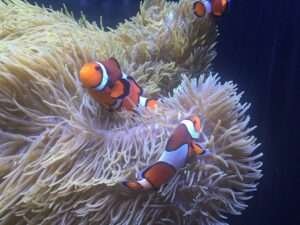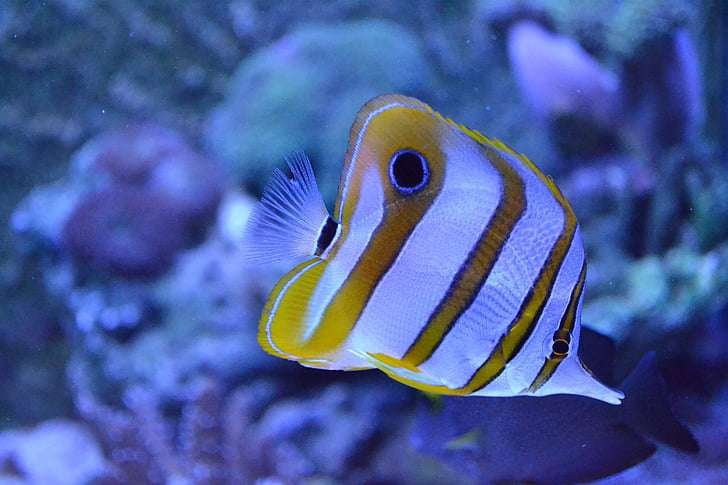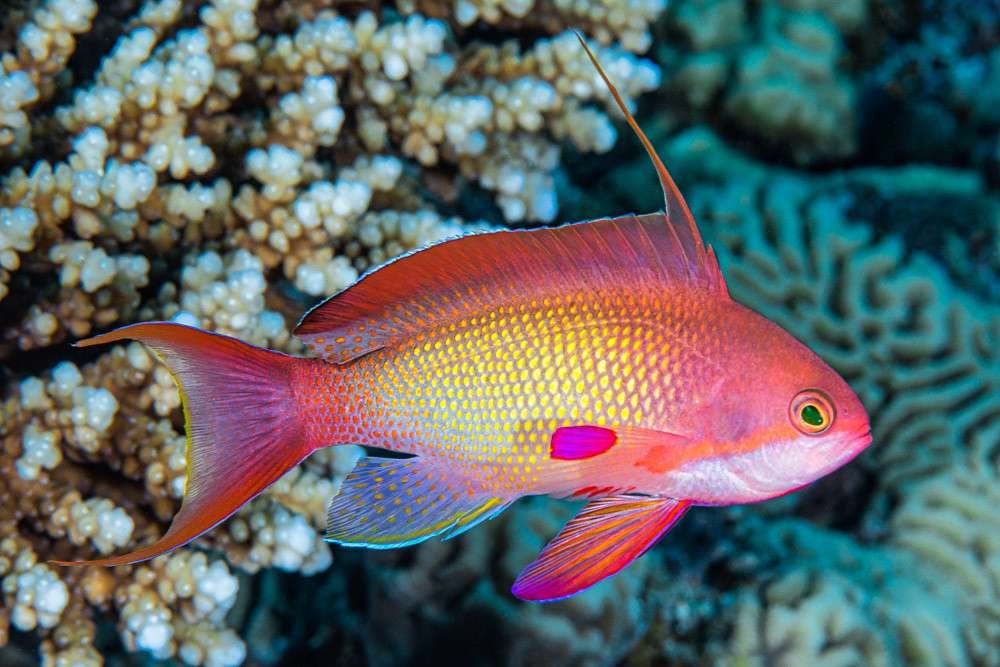Clown fish

Clownfish and anemones have a symbiotic relationship that has allowed them to adapt to life on the reef. Clownfish are small fish that would be eaten by larger fish if they weren’t protected from predators by the anemone’s stinging tentacles.
Clownfish have a unique mucus covering them that protects them from the sting cells of their host anemone. Clownfish, who may eat floating planktonic creatures, find refuge from the anemone’s tentacles.
Modifications
There is a mutually beneficial symbiotic interaction between clownfish and anemones. Clownfish shield the anemone from parasites and algae by keeping butterfly fish at bay and by removing trash, leftovers, and debris. In addition, the clownfish lures possible victims with the anemone’s tentacles before stinging and consuming them.
In return, clownfish are shielded from larger fish predators by the stinging tentacles of the anemone. Clownfish have a unique mucous covering that shields them from the anemone’s sting, allowing them to safely eat planktonic creatures inside the anemone.
ANALYTICAL DESCRIPTION
Clownfish have a maximum length of three and a half inches (8.9 cm). Usually, they have orange, red, or black patterns with white bars or patches. They have gills and fins, and their bodies are covered in scales.
SUCCESS The clownfish eats planktonic creatures, algae, and invertebrates in its natural habitat.
The home aquarium’s clownfish are kept in captivity and fed algae, flake fish food, and Mysis shrimp.
In the wild, larger fish prey on clownfish.
LIFE CYCLE
All clownfish in a small group mate only with the dominant male and female. The male tends to the 300–700 eggs that the female deposits on the stony surface beneath the host anemone. He removes any dead eggs and clears any debris while fanning the eggs. The eggs hatch at night in six to seven days, and the young, referred to as “fry,” are tiny (3–4 mm) and only male. With the currents of the water, the fry drift off and join the plankton. They are prepared to form a relationship with a host anemone after fifteen days. Clownfish primarily inhabit and eat on the edges of an anemone’s tentacles when they are juveniles. The mature male has the biological capacity to switch sexes and become a female over a few weeks in the event that the breeding female dies. A new breeding partnership is formed when the largest young male moves up to take the breeding male’s position. The species’ continued existence is ensured by this special adaptability. It is unknown how long clownfish live.
Connection to Anemones
Before they make a move, clownfish perform a complex dance with an anemone. They gently contact various parts of their bodies to the anemone’s tentacles until they get used to their host. Clownfish are protected from the deadly sting of fish-eating anemones by a mucus covering on their skin. The clownfish exchanges its capacity to ward off intruders and preen, eliminating parasites, for security from predators and leftover food.
Modifying Sexual
Clownfish are surprisingly completely male at birth. Despite having the ability to change their gender, they only do so to show off how much better they are over the other female gang members. This is an irreversible change.


